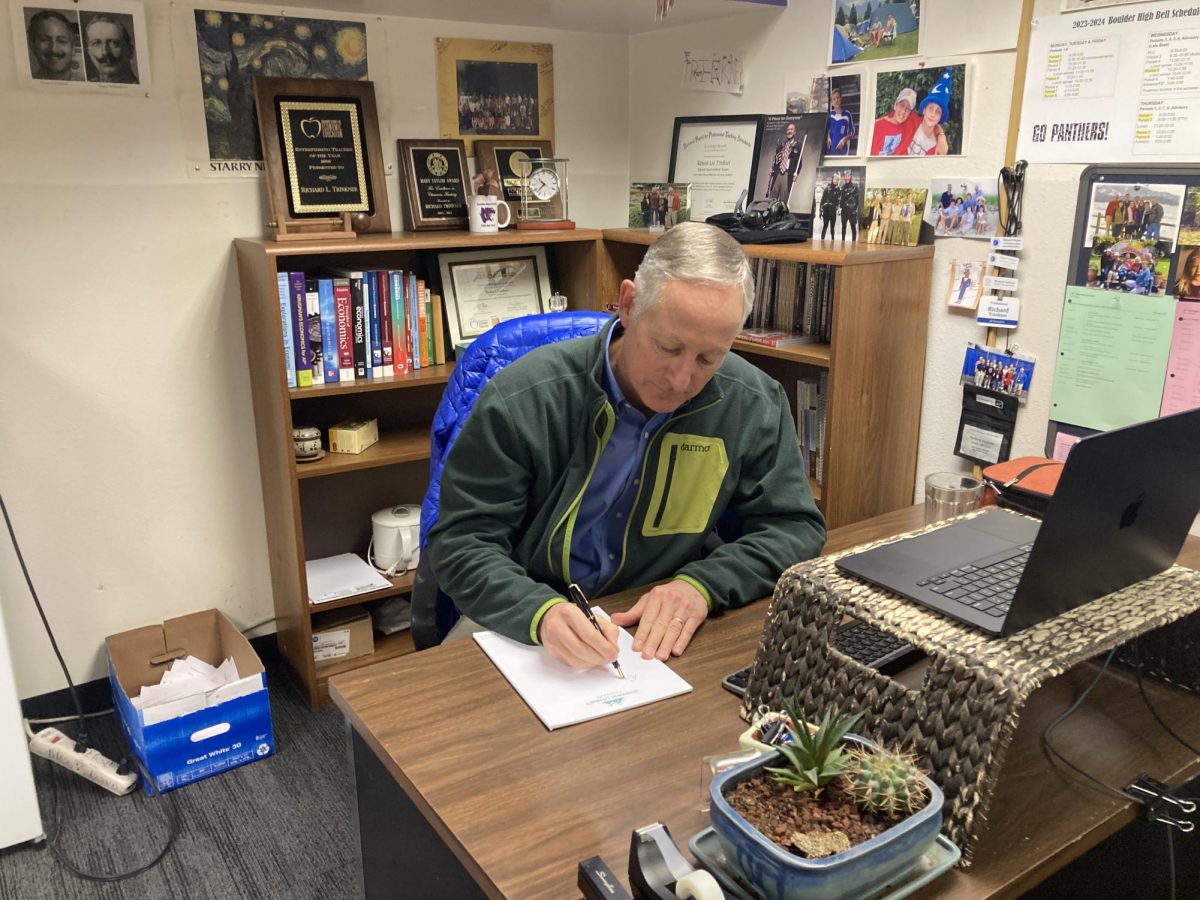In an exclusive interview with The Owl, Mr. Trinkner addressed the rumors of a potential Fountain Pen Repair Club, “It’s more than rumors [but] less than a plan, at the moment,” he weighed, “But given student interest, I think we can revive it.”
The original fountain pen repair club was founded nearly 6 years ago, when some of Mr. Trinkner’s upperclassmen students were captivated by his enthusiasm for fountain pens. Wanting vintage fountain pens of their own, they started the club with Trinkner as the chaperone. “I taught them how to find pens — repairable pens — and then…how to do the basic repairs,” he says. The club would be short-lived, however, and would disband after the founding students graduated.
Mr. Trinkner’s zeal for fountain pens extends long before the original Fountain Pen Repair Club. In 1983, while studying abroad in London, Trinker was first confronted with fountain pens as a medium for scholarly writing. “When I was studying abroad…I turned in a tutorial essay to a college professor, who after he read it, scolded me for turning it in written in ballpoint.” Trinkner explains, “[He] instructed me to march to a fountain pen store and buy a fountain pen and [to] turn in all my future essays in fountain pen. Which I did!”
Trinkner says that fountain pens were (at that time in England) considered to be more academic and professional than their ballpoint counterparts, who were “…the tools of the uneducated, and certainly [of the] non-college educated class in England. I was told that I needed to rise to my station in life by writing with a fountain pen. I’ve been writing with one ever since.”
His repair skills, however, came later when his father gifted him the pen that he had used through medical school in the 1940s. To Trinkner’s dismay, the pen was broken. Hesitant to meddle with his father’s pen, he bought a duplicate on eBay to hone his skills. After learning the basics, he repaired the identical pen without problem and then his father’s. Successful in fixing the original, and with no need for two of the same pen, he sold the second pen back on eBay to turn a profit. This entrepreneurship was later taught to the students in the original Fountain Pen Repair Club.
For aspiring repairmen, Mr. Trinkner recommends “…to start with an inexpensive, modern pen to see if they like the idea of writing with a fountain pen before they embark on restoring a vintage pen.” Trinkner also recommends that students seeking to graduate to true vintage pens should consider starting with a Sheaffer pen from the 1940s and 50s, as they are “…relatively easy to repair…sturdy…suitable for students, and [live] in backpacks and jeans pockets [while] continuing to write” (with the implication that a typical vintage fountain pen wouldn’t last long in a highschooler’s messy routine).
Further, the simplest kind of repair is for “lever filler pens”, a process that Trinkner describes as “usually just…disassembling [the] pen, installing a new rubber sack, and reassembling the pen.” However, he also warns that “…some of the early lever fillers were rather fragile.” A common issue a repairman may come across in old Sheaffer pens is a broken ink sac, having deteriorated from years of use (or lack of use).
Mr. Trinkner, as the teacher of my second period class, demonstrated the mechanism (or lever) responsible for refilling a “lever filler” pen. Firstly, the lever located on the side of the pen’s body would need to be pulled out. When moved, the lever would press down on an internal bar that squeezes the air out of the ink sac. Next, the pen would need to be dipped into an ink jar, and the lever manually flipped back into conformity with the body. The flip of the lever, while the pen is dipped in the ink jar, would create a vacuum and suck the ink up into the ink sac. Mr. Trinkner believes this can be a very messy process if one is not careful.
Regarding ink, Mr. Trinkner prefers the color blue. More specifically, “Serenity Blue” by the Waterman Company because “…it is a vibrant blue that is also washable, so if I stain my hands, fingers, or clothes, it is easy to get it out.” Trinkner also mentions that it is inexpensive, common, and the best (in his opinion) for vintage pens.
Topics such as ink and pen manufacturers would surely come up in the routine of a new Fountain Pen Repair Club. Those who have already talked to Mr. Trinkner on the topic of fountain pens may have learned about the advantages of a golden nib or even the mysterious “snorkel” mechanism. Along with being a place for repairing fountain pens, the club could also be a hub of discussion and learning.
Students looking to learn more about fountain pens should contact Mr. Trinkner and inquire about the status of the club. With enough interest, Mr. Trinkner thinks that “…we can revive it.” More likely than not, the club would “…be something that would happen once a week after school.” At the end of the day, student interest dictates the success of school clubs, and there are certainly folks here at Boulder High who would love to join the Fountain Pen Repair Club.



